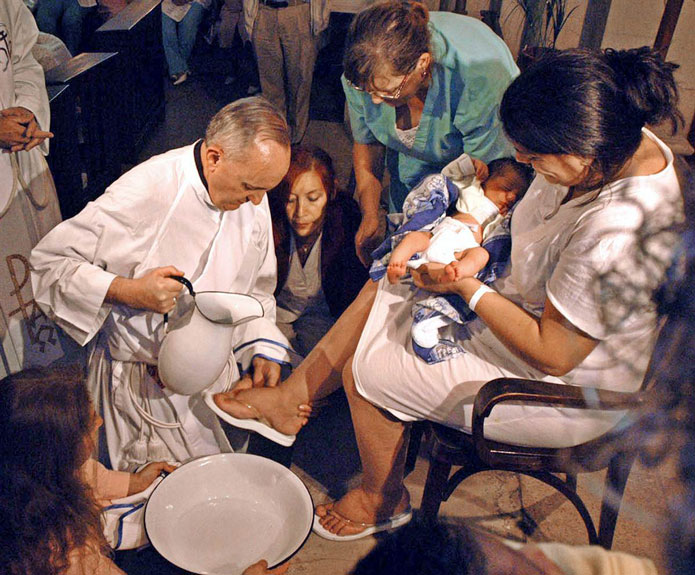Written by Anna Krohn, National Bioethics Convenor
Pope John Paul II surprised many when he affirmed the insights of over a century of women’s activism: “Women’s dignity has often been unacknowledged and their prerogatives misrepresented; they have often been relegated to the margins of society and even reduced to servitude. This has prevented women from truly being themselves and it has resulted in a spiritual impoverishment of humanity.” (Letter to Women #3)
Many of the leading women, within the history of the various movements which fed into the federation we know today as Catholic Women’s League Australia, were aware of this socially conditioned “misrepresentation” of women and also of the key roles which women play in enriching humanity. Members of the League have promoted the dignity of the human person, and the sanctity of each human life at local, state and international levels, and have seen in the teachings of the Popes not a ‘patriarchal oppressor’ but a champion of women.
The entire movement of what is now titled the “new feminism” or “pro woman/pro-life” feminism was deeply informed by the writings of the great philosopher Blessed John Paul II.
In his ground-breaking encyclical Evangelium Vitae (1995), which consolidates the Church’s moral and social teachings into a holistic “culture of life”, John Paul urges women to be at the forefront of an evangelising revolution built on an active but “‘new feminism’ which rejects the temptation of imitating models of ‘male domination,’ in order to acknowledge and affirm the true genius of women in every aspect of the life of society, and overcome all discrimination, violence and exploitation.”
In his Theology of the Body addresses, his Letter to Women and the encyclical Mulieris Dignitatis, John Paul II pursues the notion of “new feminism” further by proposing the outlines of a celebration of femininity and of motherhood (both spiritual and actual) as an ontologically and metaphysically distinct, equal and complementary way of being human and called by God. It is women, insisted John Paul II, in the women “at the Tomb” and down through personal and cultural history, who are “the first” witnesses of Jesus Christ and the Gospel.
Blessed John Paul II insisted that it was women inspired by the “new feminism”, such as Dr Mary Ann Glendon, who were the official leaders of the Holy See’s delegation into some of the toughest ideological disputes around. Many members of the League have entered these same disputes with energy and courage—most recently Jane Munro, our National International Secretary, and Fiona Basile, our Youth Observer, at the United Nations.

Pope Benedict XVI, the scripture scholar and theologian with a deep concern for the shape of culture and history, has contributed quite new interpretations about the teaching and theological leadership of women in the life of the Church.
He has few particular teaching documents “on women” but assumes the inclusion of women in his exegesis of particular scriptural scenes, and in his response to modern existential questions. Most particularly, Pope Benedict teaches about women not with his own words but by pointing and highlighting the lessons of their lives and loves: “The true stars of our life are the people who have lived good lives… They are our lights of hope.”
To illustrate this, he bookends his encyclical about the theological virtue of hope—Spe Salve—with two mighty women “stars”: he opens with the liberated African slave girl and later missionary sister Saint Josphine Bakhita and closes with the “star” witness to Christ, His Mother Mary. The Virgin Mary for Benedict is not simply the object of idealised devotion but truly the Heroine of the new Covenant, and the Mother founder of the Christ’s family—the Church.
In one of his discussions with priests, Pope Benedict XVI raised some very interesting ideas about the usually male-shaped notion of “governance” when he said: “How could one imagine the governance of the church without this contribution, which sometimes has been quite visible, like when St. Hildegard criticized the bishops or when St. Brigid and St. Catherine of Siena admonished and obtained the return of the popes to Rome from Avignon.”
Benedict believes that God writes his Word into the lives of holy people. He expands on John Paul II’s idea of “feminine genius” but is graciously reticent to define “femininity” as such, but rather in an important general audience series highlighted the “wealth” to theology, liturgy and Church life made by great and holy medieval women. Of women’s teaching authority and theological inspiration, he says: “ …it has always has been a determining factor without which the Church could not live.”
The newly elected Pope Francis has a very different style of communication which is neither the systematic anthropological exegesis of John Paul II, nor silvery and elegant theological narrative of Benedict. Nonetheless, he seems to teach by action and short but pithy bon mots.
Like his predecessors, Francis has a tangible and deep devotion to the Virgin Mary and to the importance of the Culture of Life. He has signalled a particular dedication by reaching out to women who are marginalised and poor, and affirming their roles as prophetic voices “for life” with his touching gesture of washing the feet of mothers on Holy Thursday, when he was Cardinal. He addressed these women saying: “Some of you are holding your babies in your arms. Others of you are carrying them in your womb. All of you are women who have chosen life. I, as a priest, am going to repeat the act of Jesus, and carry out a concrete act of service for women who have said yes to life. In washing your feet, I am washing those of all mothers, and of my mother, who felt me in her womb.”
Recommended further reading on this subject:
Fiona Basile - Embracing new feminism and the culture of life
Leonie Caldecott - Sincere Gift: The Pope’s “New Feminism”
Anna Hatke - Women of the Third Millennium